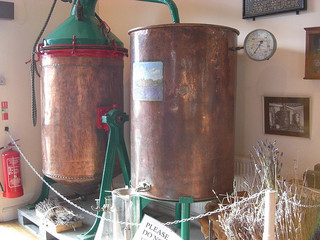Skin health is constantly threatened by various environmental factors, from harmful ultraviolet rays to city smog and industrial contaminants. Poor air quality is a significant culprit in painful breakouts, infections, aging, and dullness, leaving many questioning how to take care of their skin in pollution.
A comprehensive skincare routine is your best defense against environmental aggressors. Coupled with today’s wide-ranging natural products for a clearer complexion, you aren’t lacking options for quality treatments. Here’s what you need to know about protecting your skin from harmful air pollution and rejuvenating it to its former radiance.
Environmental Effects on Skin Health
Research continues to underscore the harmful dermatological effects of pollution. For example, one study found an indirect correlation between acne and exposure to particulate matter, nitrogen dioxide, and sulfur dioxide. These compounds penetrate the skin barrier and increase the risk of inflammation, aging, atopic dermatitis, and eczema.
In another study, 10 micrograms per cubic meter of nitrogen dioxide was associated with a 2.1% higher prevalence of psoriasis.
These pollutants are most common in the built environment, where commercial structures and transportation regularly emit greenhouse gases. Unfortunately, nearly 80% of the U.S. population lives in urban areas with less access to clean air.
Yet, another study showed how living further away from central roadways resulted in an 18.8% decreased chance of atopic dermatitis in adults. Children also had a 26.1% lower chance of atopic dermatitis while living 1,000 meters from a busy street.
Skin Care Industry Reaches New Heights
More people have opted for skincare routines as they become aware of the potential for environmental damage. Since 2022, the dermatology market size has been $7.7 billion, increasing by a steady 1.2% annually.
Natural skin care products are all the rage as consumers search for treatments with clean, plant-based ingredients. Likewise, using only three to four products instead of 10 prevents you from over-treating the skin and causing more harm than good.
But before you purchase a few high-quality, natural skin care products, dermatology professionals warn they may not be all they seem. The U.S. Food and Drug Administration does not have set standards for what’s naturally occurring in these treatments. However, the U.S. Department of Agriculture will certify products with 95% organic agricultural ingredients, so look for the label.
How to Take Care of Skin in Pollution
The environment can cause significant dermatological damage if you’re not careful, which is why you want to adopt a skin care regimen to protect your complexion. Here’s how to take care of your skin in pollution.
1. Apply Sunscreen
The sun’s ultraviolet rays (UV) are dangerous to skin health and can lead to cancer. Even on a cloudy day, UV exposure poses a threat.
According to a decade-long study, the prevalence of squamous cell carcinomas was 40% lower in participants who wore sunscreen daily. The American Academy of Dermatology suggests using a 30 SPF sunscreen for all skin types, regardless of race. However, children over six years old and those susceptible to sunburns might wear a higher protective factor.
2. Wear Less Makeup
Some people refuse to leave their homes without makeup. However, cosmetics can easily clog pores, leading to skin irritation, inflammation, and acne. Your skin is already under stress from environmental pollutants. Therefore, it’s a good idea to give it a break and save the glammed-up look for special occasions.
3. Exfoliate
Exfoliating two to three times weekly can remove pollutants trapped in the skin’s surface. Overall, this critical skincare step extracts dead skin cells and debris, evens tone and texture, and makes your skin look brighter.
Removing damaged cells also improves the absorption of moisturizers and serums, preventing further environmental harm. To avoid irritation and redness, sensitive skin should be treated with a gentle, less abrasive exfoliant.
4. Apply an Antioxidant Serum
Antioxidant serums containing vitamins C and E protect against harmful air particles and prevent free radicals. Vitamin C, in particular, is often used for skin brightening and resisting sun damage, while vitamin E contains moisturizing properties.
You can also increase your antioxidant levels with supplements. According to research, participants who ate antioxidant-rich foods reduced skin aging by 10% over 15 years compared to those who did not eat an adequate diet.
5. Use a Hyaluronic Acid Moisturizer
When learning how to take care of your skin in pollution, hyaluronic acid moisturizer is your best friend. It creates a robust protective armor against harmful environmental contaminants and reduces oxidative stress.
Some hyaluronic acid moisturizers are designed for specific skin types, so read the packaging. Likewise, ensure it’s high on a product’s ingredient list to reap the best effects of the solution.
6. Stay Hydrated
Of course, drinking plenty of water is excellent for your complexion, improving your skin’s texture and decreasing breakouts. To stay hydrated, keep a reusable water bottle with you throughout the day.
If your home’s air is dry, you can also invest in a humidifier — this is particularly beneficial for your skin in the winter and during the summer when allergens are high. A hydrating serum will also help lock in moisture.
Achieve Glowing Skin in a Polluted World
Some things are outside of your control, like industrial emissions. However, when it comes to skin health, you can do plenty for a healthy, beautiful complexion. Protect your skin from the worst environmental harm by utilizing gentle products and adopting a skincare routine for glorious skin vitality.
Beth Rush is the green wellness editor at Body+Mind. She has more than five years of experience writing and editing articles covering topics like sustainable transit and the importance of green spaces in urban planning. You can find Beth on Twitter @bodymindmag. Subscribe to Body+Mind for more posts by Beth!
Image by u_635dpcvemx







One Comment
Pingback: